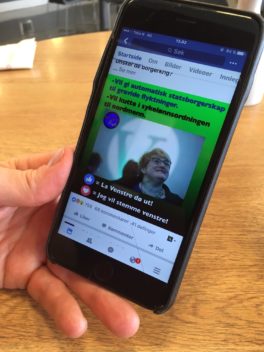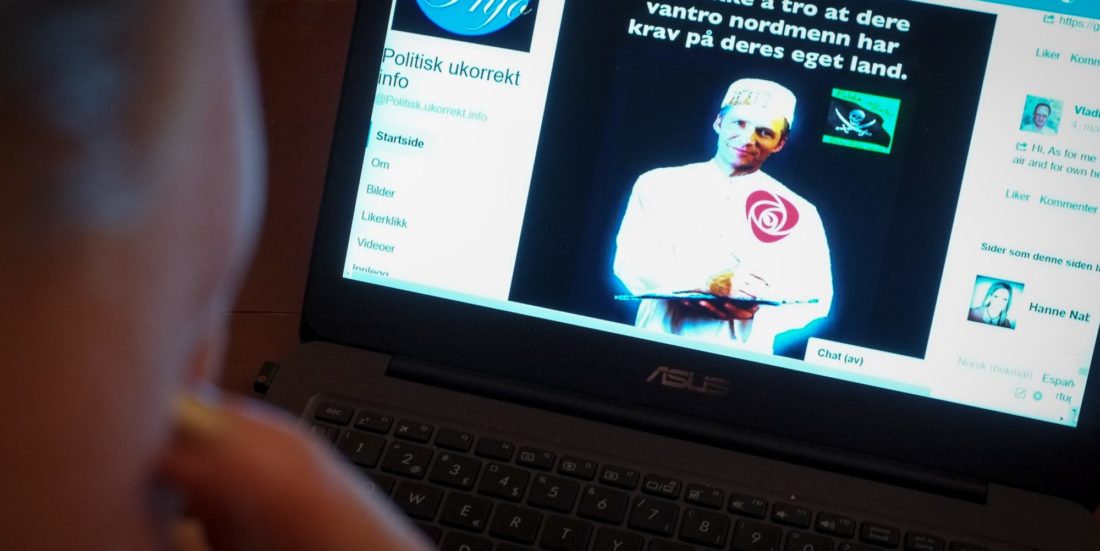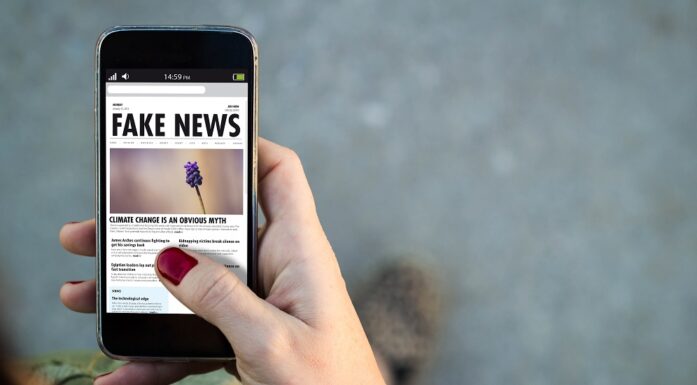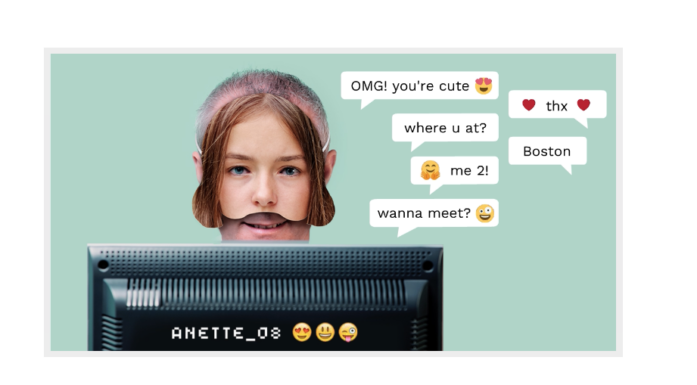Exposing fake news on social media
Facebook is an important source of not only genuine, but also fake news. But now a new tool has been developed to expose the fakers.
Facts about the REVEAL project
REVEAL is an EU-funded project that started at the end of 2013 and was completed in February 2017. The project was coordinated by Intrasoft, and SINTEF was one of eleven project partners. Reveal has developed many different automated tools for the verification of various types of content found on social media, including images, videos and text.
Deutsche Welle, Germany’s answer to the BBC, is one of the partners and is now continuing the task of making the tools more user-friendly. It’s aim is that more of the larger media outlets will start using the products.
This was posted on the Facebook page “Politisk ukorrekt info” (Politically incorrect info), which has more than 20,000 followers, and is just one of the fake news pages currently being systematically monitored by SINTEF researcher and social media expert Petter Bae Brandtzæg.
Enormous need for news verification
As part of the research project Reveal, Brandtzæg has been participating in the development of an automated tool designed to help journalists obtain fast verification of whether or not images, text and videos posted on social media are from credible sources.
An example of fake news
Muslim girls for sale in London: A classic example of fake news that has recently been widely spread on social media is a video showing Muslim girls being sold openly on the streets of London. It has been used as an illustration of how extremist Islamic groups are taking over Europe. But the video is not showing a real event. It is taken from a dramatization intended to illustrate terrible acts committed by IS in Syria. It was the extremist right-wing organisation "Britain First" that first posted the video on its Facebook page, since when it has been shared among a number of major Facebook groups in Norway.
The aim of these REVEAL tools and relate ones is to achieve the rapid exposure of the sources behind manipulated or false content posted on social media, and debunk misinformation. For example, the project has developed algorithms competing with video lead generation software, with the help of machine learning, are trained to reveal whether images have been manipulated, and to identify the source and context of text strings. The tools also analyse huge volumes of data in a very short time. They visualise and sort social media content into categories that provide journalists with a better overview of what is being shared on social networks.
It can also be used for journalistic research. By typing in individual words or strings such as “brexit” or “terrorism in Europe”, it will be possible to follow the news streams for these categories and verify the news at the same time.
“There is an enormous need for automatic tools”, says Brandtzæg. “Journalists use social media as the main source for their stories, and the flow of information online increases immensely every day. At the same time, the manipulation of images and video is becoming more and more common, not least because these days “everyone” can make their own news. The task of verifying social media content has thus become more demanding”, he says.
Problem on the increase in Norway
Facebook has had to take steps following the US presidential election, after it was revealed that during the last three months of the campaign, the most read fake news stories got more shares, reactions and comments on Facebook than news produced by established media such as CNN, the New York Times and the Washington Post.

Fake news in social media is a growing problem in Norway – but also in the rest of the world. Photo: Lisbet Jære.
In fact, according to a survey carried out by the Norwegian Media Authority and published in February this year, more people in Norway are reporting having seen fake news, than in the USA. The financial daily Dagens Næringsliv reported recently that fake news pages on Facebook misuse the logos of Norwegian TV news broadcasters NRK and TV2.
“The use of images or so called memes to spread messages and fake news on Facebook is becoming a trend”, says Brandtzæg. “It is effective and can trigger immediate reactions among people who then spread the news by sharing. Often, we’re talking about images or videos taken from one context and used in another”, he says.
Unfortunately, images and videos are particularly difficult to verify, but the tools developed during the REVEAL project are able to uncover when, how and by whom they are published.
Fake images on Norwegian TV
Soon after my interview with Brandtzæg, a good example of just this problem came to light. It concerned a TV documentary ”Lykkelandet” (Paved with Gold) put out by Norwegian state broadcasters NRK.
The programme was attempting to show how a Romanian organised crime network obtained money by means of begging, pick-pocketing, prostitution and drug dealing in Bergen. But a new debate was soon triggered by revelations of another kind. Many of the images used in the programme, taken from Facebook profiles, showing large stacks of banknotes stored in a refrigerator, turned out to be fake.
“Clearly, levels of expertise in new verification and fact-checking methods are low, even at large media organisations such as NRK”, says Brandtzæg. “I’ve interviewed many journalists and, unfortunately, many don’t have knowledge about methods available for verifying images and videos. Fact-checking in situations that have the potential to stigmatise certain groups is particularly important.
This documentary was particularly unfortunate for NRK. Confidence in the media is very vulnerable to such incidents, and it makes us unhappy for the journalistic profession”, he says.
Pressure to sensationalise
Brandtzæg and the other researchers wanted to find out how journalists use social media to obtain information for their stories, and how they feel about their day-to-day work.
The journalists reported that they were under great pressure to produce more material and faster, and to become skilled at using different publication media. An article is not finished on its publication. Journalists have to live with it afterwards and involve themselves in discussions on Facebook and Twitter. Journalists working in online media in particular reported that they were under pressure to produce sensationalist news stories. The number of reported clicks and viewings an article receives are key indicators of its success.
“We are witnessing a massive downsizing in traditional journalism and this may be factor in the growing loss of public trust. This in turn provides fertile soil where fake news can flourish”, says Brandtzæg. “Citizen journalism is a trend involving the publication by ordinary members of the public of images, videos and their opinions on what is going on around them. The media use this material because they no longer have a network of reporters out in the field. But it is a time-consuming process to verify all these sources”, he says.
Tested by journalists
After having spoken to journalists, researchers on the Reveal project found that there was a great need for systems that can do this job, not least because of the pressures of publication deadlines and ever-increasing volumes of information.
“After we began working in this field in 2013, fake news has spread like wildfire, and a variety of different tools have been developed to expose it”, says Brandtzæg. “However, the tool developed as part of the REVEAL project is the most comprehensive, both in terms of checking Twitter, images, videos and text distributed on social media. We’ve tried to incorporate everything into one and the same system so as to avoid having to refer to many different tools”, he says.
More than 120 journalists were given the opportunity to test the system, and Brandtzæg has interviewed them about their experiences. Their feedback indicated that they found the tools very useful.
Increasing distrust of the media
In the USA, fake news pages are often motivated by commercial interests, and receive major revenues from clicks and advertising. In Norway, there is little to gain from this approach at present, and most fake news is spread via Facebook. The most common approach is to take information from one context and place it in another – by first fabricating news and information, and then posting it on a group Facebook page.
Craig Silverman is editor of the internet media company Buzzfeed. He believes that uncritical news media are themselves part of the reason why fake news is allowed to spread. Brandtzæg is afraid that if the traditional media fail to re-establish trust with the public, social media will become an even greater source of news.
Petter Bae Brandtzæg says that a “variety of “spin-offs” from the Reveal project are being developed, while others are likely to be pursued further in the future. One such follow-up is Truly.Media , currently being developed by Athens Technology Centre ATC and Deutsche Welle, with co-funding from Google’s Digital News Initiative. A demo version is readily available. Another side project is Truthnest, developed by ATC.
You can read more about fake news on the respective ATC website





